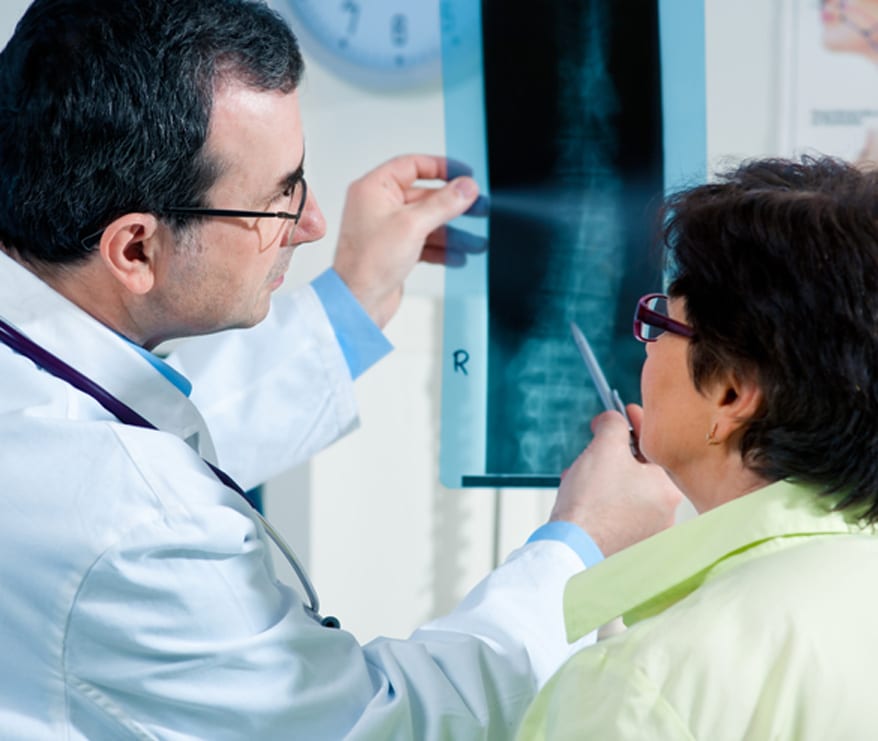
The sacroiliac (SI) joints are located at the intersection of the sacrum and ilium, near the bottom of the spine, and are responsible for distributing weight across the pelvis.
The SI joints also act as a shock absorber and help reduce pressure on the spine. The spaces between the bones of the SI joints are filled with fluid (for lubrication) and have nerve endings, which send pain signals to the brain.
The SI joints are connected by very strong ligaments and muscles that provide stability and enable limited movement. Movement in the SI joints allow an individual to stand upright and is necessary for childbirth.
The SI joint is the cause of 15 to 30 percent of chronic lower back pain cases. Pain in the SI joints may radiate from the hips and pelvis, up to the lower back, and down to the thighs. Individuals may experience numbness, a tingling sensation and feel as if their legs are unable to support their body.
Causes of SI Joint Pain
Pain in the SI joint pain, also known as sacroiliitis, may be caused by the following conditions and activities:
- Osteoarthritis. Individuals with worn down cartilage are at increased risk of SI joint pain.
- Ankylosing spondylitis. This type of inflammatory arthritis affects the vertebrae and joints of the spine.
- Gout. Gouty arthritis may be caused by high levels of uric acid and affect all joints, including the SI joints.
- Injuries sustained from falls and car accidents.
- Pregnancy. Women who receive the hormone Relaxin during pregnancy to enable the pelvis to widen during childbirth may have less stable joints and increase their risk of SI joint pain.
- Abnormal walking patterns. Individuals who have one leg shorter than the other, or who favor one leg because of pain may develop SI joint pain. Some pregnant women may walk abnormally as well.


Symptoms of SI Joint Pain
Signs of SI joint pain may include:
- Lower back pain
- Pain in the groin, buttocks, hips and pelvis
- Pain in one of the SI joints
- Numbness and weakness
- Increased pain when standing up from a sitting position
- Stiffness or a burning sensation in the pelvis
- Pain radiating down into the thighs and upper legs
- Feeling unstable when standing up
An SI joint block can help alleviate pain in the SI joint and improve an individual’s quality of life. Patients should speak to their doctor to find out if this procedure is an option for them.
Side Effects and Risks
The procedure is generally safe, with few temporary side effects such as bruising or soreness at the injection site. More serious and rare complications may include infection, nerve damage and bleeding.
What to Expect During a Sacroiliac (SI) Joint Block Procedure
The patient will be asked to lie down on their stomach on an x-ray table. The physician will then cleanse the patient’s neck and offer intravenous medication to help the patient relax.
Under x-ray guidance, the physician will insert a thin needle into the patient’s sacroiliac joint and inject a local anesthetic and dye to confirm proper needle placement. A second needle will be inserted and the anesthetic and steroid will be injected.
Patients will be monitored for about 20-30 minutes. After that, patients will receive verbal and written discharge instructions and will be allowed to go home with their driver.

